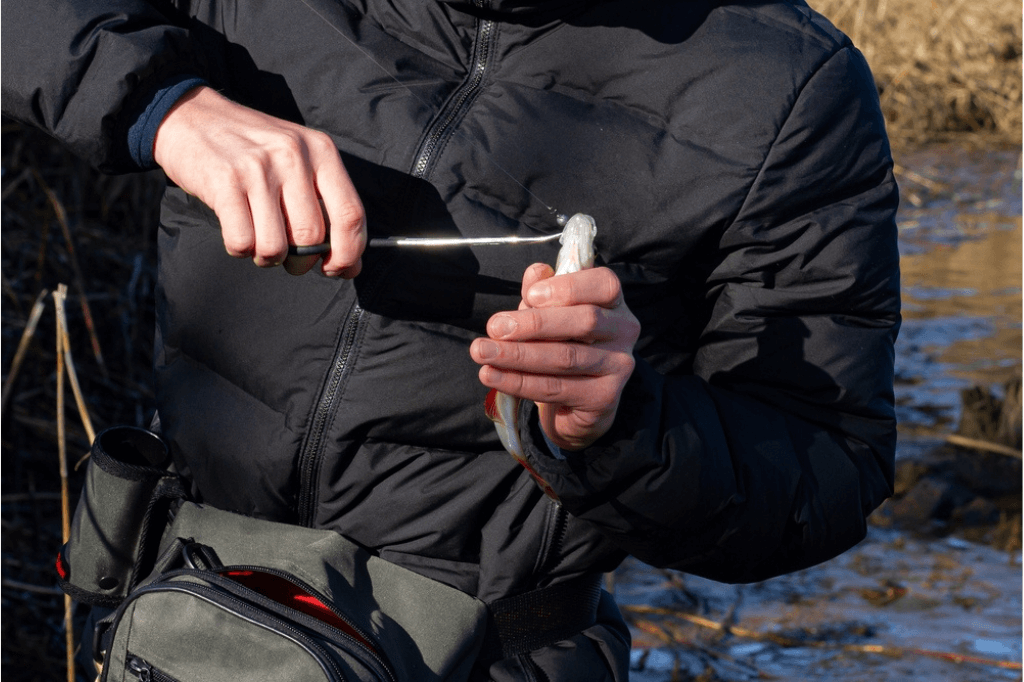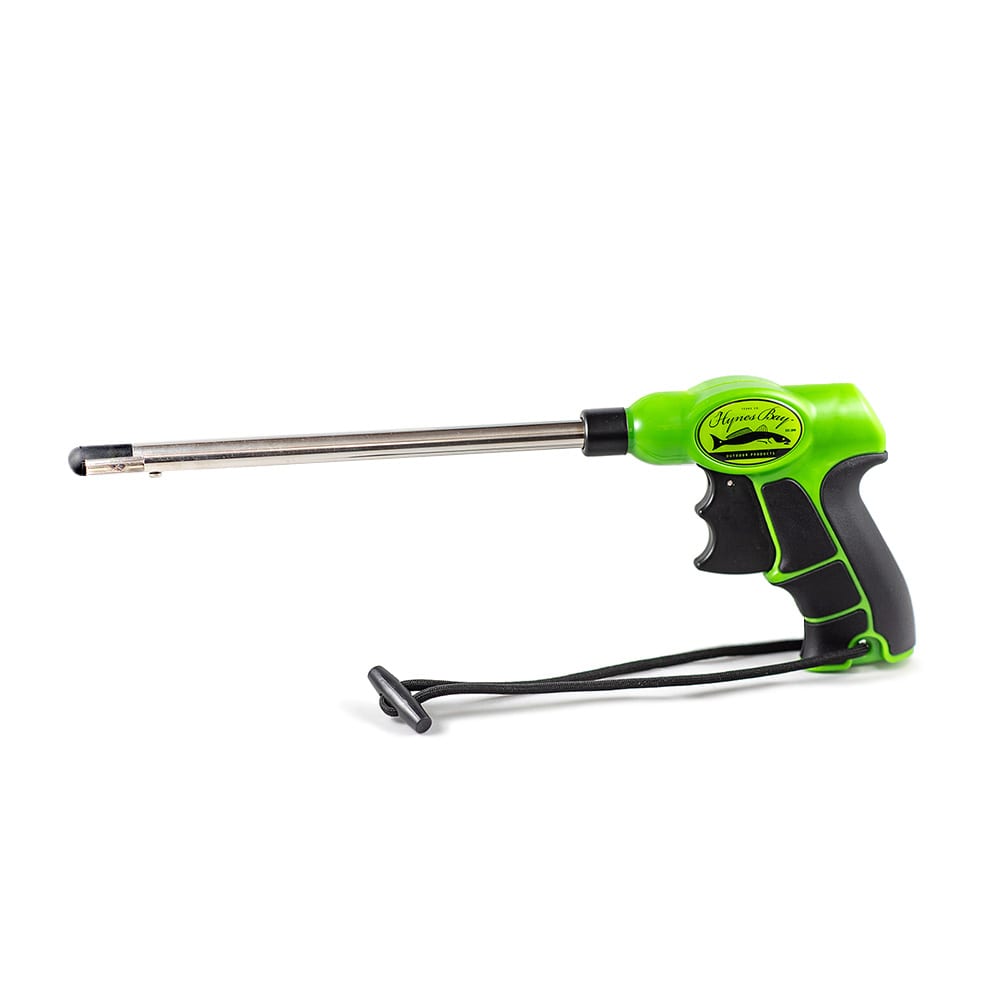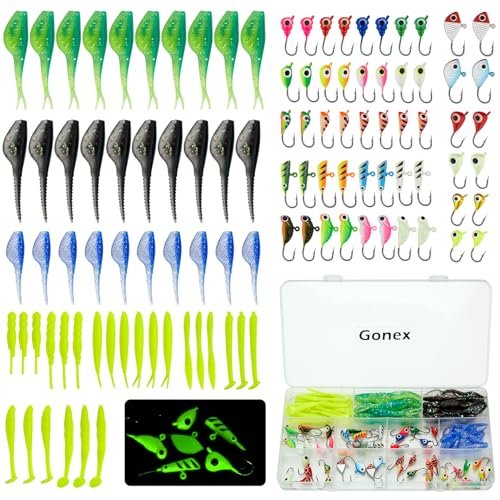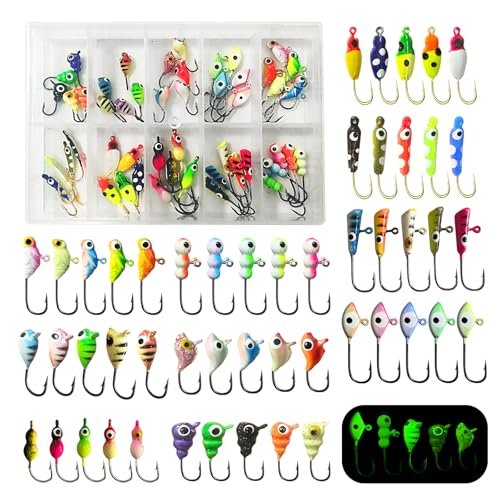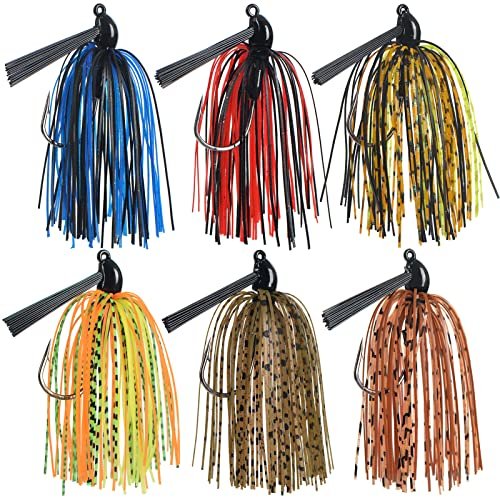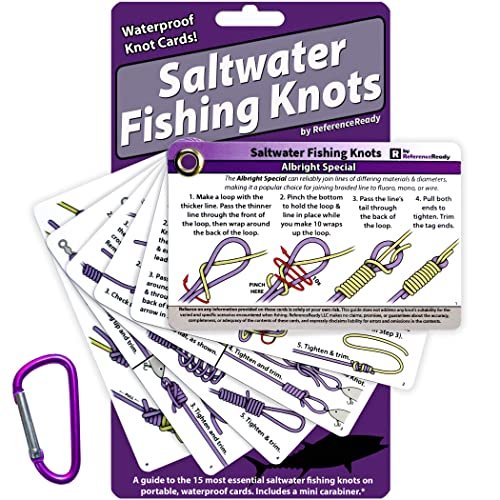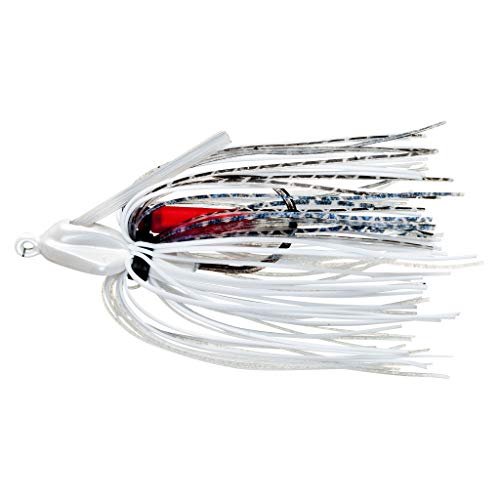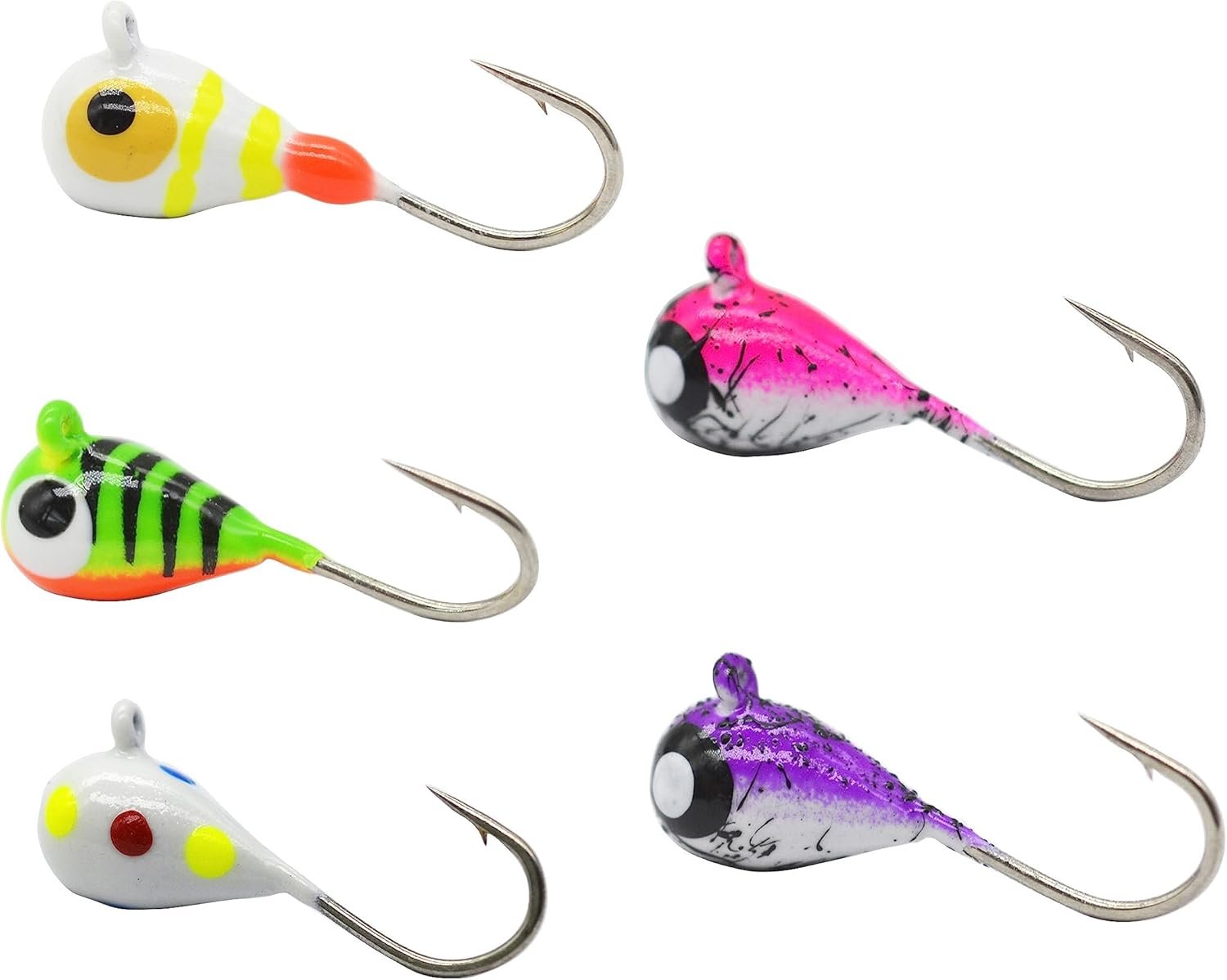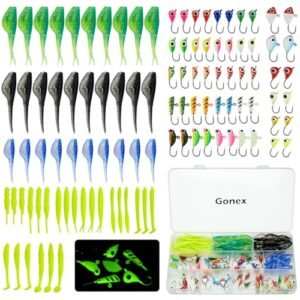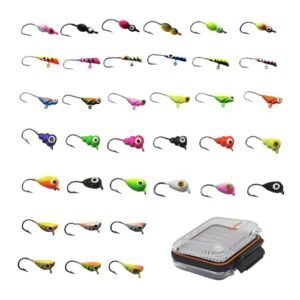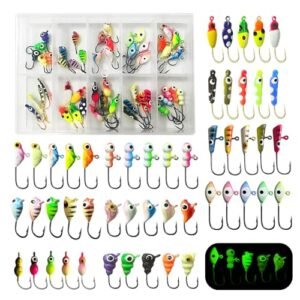Anglers know the challenge of unhooking a fish without causing injury to themselves or the catch. The right tool is crucial for this delicate task. Enter the fish hook remover, an essential piece of equipment for any fishing enthusiast. This device not only safeguards the fish’s well-being, promoting catch-and-release practices, but it also protects the user from potential punctures or cuts.
Compact and easy to use, fish hook removers come in various styles to accommodate different fishing scenarios. They are typically crafted from durable materials like stainless steel or plastic to withstand the elements and the rigors of fishing. By enabling quick and efficient hook removal, these tools enhance the overall fishing experience and contribute to sustainable fishing efforts.
The Angler’s Companion: Fish Hook Remover
Fishing is a blend of art and science, with tools that enhance both the joy and success of the experience. A fish hook remover is a must-have for any angler. This device is not just a handy tool; it’s an essential part of the tackle box.
Why Every Angler Needs One
Quick and Efficient: A fish hook remover allows for the fast release of the catch. It means more time fishing and less time fiddling with the line.
Minimal Handling: This tool reduces the need to handle fish. It helps maintain the fish’s protective slime coat, which is vital for their health.
- Preserves Tackle: By removing hooks cleanly, anglers save money on hooks and lures.
- Versatile: It works on various hook sizes and fish species.
Safety First: Protecting You And The Fish
Using a fish hook remover is safer for both the angler and the fish. It prevents injuries from sharp hooks.
For Anglers: It keeps fingers away from sharp teeth and hooks.
For Fish: It lessens the chance of injuring the fish, which is especially important for catch-and-release.
| Benefit | Angler | Fish |
|---|---|---|
| Safety | Less risk of hand injuries | Decreased injury, better survival rates |
| Speed | Quick hook removal | Less stress and quicker return to water |
Types Of Fish Hook Removers
Every angler knows the importance of a good fish hook remover. It keeps both fish and fingers safe. Let’s dive into the different types of fish hook removers available.
Spring-loaded Mechanisms
Spring-loaded mechanisms are easy to use. Just squeeze and remove the hook. They come in various sizes. This makes them perfect for all fishing types.
Disgorger Tools
Disgorger tools are great for deep hooks. They reach down the fish’s mouth safely. This tool helps in protecting the fish for a catch and release.
Long-nose Pliers Variants
Long-nose pliers are a must-have for anglers. Their long design helps in reaching deep hooks. They are not just for removing hooks. They also help in bending wires and cutting lines.
| Type | Use | Benefit |
|---|---|---|
| Spring-Loaded | Easy hook removal | Quick and safe |
| Disgorger | Deep hook removal | Protects fish |
| Long-Nose Pliers | Multi-use | Versatile |
- Spring-loaded mechanisms are quick.
- Disgorger tools protect the fish.
- Long-nose pliers offer versatility.
Material Matters In Hook Removers
Choosing the right material for a fish hook remover is key. It impacts how well it works and how long it lasts. Two popular materials are stainless steel and aluminum. Let’s dive into which one might be best for you.
Stainless Steel Vs. Aluminum
Both materials have their pros and cons. Understanding these can help you make the best choice.
- Stainless Steel is heavy-duty and feels solid in hand.
- Aluminum is lighter, making it easy to carry around all day.
Durability And Corrosion Resistance
These factors are vital for any tool used in water, especially saltwater.
| Material | Durability | Corrosion Resistance |
|---|---|---|
| Stainless Steel | High | Good |
| Aluminum | Moderate | Excellent |
Stainless steel stands up to heavy use but can rust without proper care. Aluminum, on the other hand, doesn’t rust. This makes it a great choice for saltwater fishing.

Size And Portability
The right fish hook remover not only ensures a safe catch-and-release but also fits seamlessly into your gear. Let’s talk about the size and portability, which are as crucial as the tool’s functionality. A perfect balance between these factors makes all the difference during your angling adventures.
Compact Designs For Easy Storage
Anglers value space, and compact fish hook removers excel in this area. They slip into tackle boxes with ease. Some even come with special features:
- Retractable mechanisms reduce the tool’s size when not in use.
- Lightweight materials offer hassle-free transport.
- Integrated clips attach to vests or belts.
These designs ensure your fishing trips are clutter-free and organized.
Choosing The Right Length For Your Fishing Style
The length of a fish hook remover should match your fishing style. Consider these points:
| Fishing Style | Suggested Length |
|---|---|
| Shore Fishing | Shorter, more maneuverable tools |
| Boat Fishing | Longer, to reach over the side |
| Ice Fishing | Compact, to use in tight spaces |
Choose a remover that feels right in your hand and suits your fishing environment.
Ergonomics And Ease Of Use
When tackling the challenge of removing hooks from fish, comfort and simplicity are key. Anglers need tools that minimize harm to the fish and reduce hand strain. Let’s explore the ergonomic designs that make fish hook removers indispensable for efficient and humane fishing.
Comfortable Grips For Efficient Use
Fishing requires patience and dexterity, especially when unhooking a catch. Ergonomic grips on fish hook removers provide comfort that lasts through long fishing sessions. These grips often feature:
- Non-slip materials that enhance grip stability even when wet.
- Contours that fit naturally in the hand, distributing pressure evenly.
- Lightweight design, reducing arm fatigue.
Such features ensure that anglers can operate the tool with minimal effort, leading to a more enjoyable fishing experience.
Design Features For Simple Hook Removal
Effective fish hook removers must do their job quickly to protect the fish. Design elements that aid in this include:
- Long shafts that reach deep-set hooks with ease.
- Precise tips that grip hooks securely without slipping.
- A simple mechanism, like a trigger or squeeze function, for one-handed operation.
These features combine to make hook removal a swift and stress-free task. Anglers can release their catch back into the water with minimal handling, promoting the well-being of the fish.
Precision And Control
Removing a fish hook with precision and control is vital. It ensures safety for both the angler and the fish. Let’s explore how accuracy and the right tools make this task easier.
The Importance Of Accuracy
Accuracy matters when removing a fish hook. A precise grip prevents harm. Fishermen need to unhook quickly and safely. This care keeps fish healthy for release.
- Minimize Fish Stress: Accurate unhooking reduces fish stress and injury.
- Protect Fingers: Anglers stay safe from sharp hooks.
- Save Time: Quick, accurate hook removal speeds up the process.
Enhancing Control With The Right Tool
Choosing the right fish hook remover boosts control. Enhanced grip features lead to better handling. High-quality materials ensure tool longevity.
| Tool Feature | Control Benefit |
|---|---|
| Ergonomic Handle | Improves grip, reduces slippage. |
| Spring-loaded Mechanism | Allows for one-handed operation. |
| Long Nose Design | Reaches deep-set hooks easily. |
Match the remover to the fishing environment. Freshwater and saltwater require different tools. Durable, rust-resistant materials are best for saltwater. Lightweight, sensitive tools suit freshwater.
Invest in a quality fish hook remover. This investment pays off in better catches and safer fishing trips.
Maintenance And Care
Keeping your fish hook remover in top condition ensures a smooth release of fish and extends the tool’s life. Simple steps can prevent rust and damage. Let’s dive into the upkeep of your indispensable fishing companion.
Cleaning Your Hook Remover
Clean after every use. Saltwater and debris can corrode metal parts. Use fresh water to rinse off salt and grime. Dry thoroughly with a soft cloth. Apply a light lubricant to moving parts. This protects against rust and ensures smooth operation.
Regular Check-ups For Reliable Performance
Inspect your tool often. Look for signs of wear or corrosion. Check that grips and triggers work freely. Test the jaws for firm hold on hooks. Replace parts as needed. Regular maintenance assures peak performance when you need it most.
- Use fresh water for rinsing
- Dry with a soft cloth
- Apply lubricant to moving parts
- Inspect for damage or wear
- Check grips and triggers
- Ensure jaws hold hooks tightly
- Replace parts when necessary
Innovations In Hook Removal
Innovations in Hook Removal have transformed the fishing world. These changes make fishing safer and quicker. Let’s explore the latest technologies and what the future holds for angling tools.
Latest Technological Advancements
- Automatic Fish Hook Removers: These tools remove hooks with the press of a button. They ensure minimal harm to fish and are easy to use.
- Magnetic Hook Removers: Using magnets, these devices easily detach hooks from fish. This method is quick and gentle on the fish.
- High-Precision Tools: New hook removers come with better grip and precision. They allow anglers to remove hooks in hard-to-reach areas.
Future Trends In Angling Tools
Looking ahead, innovation in fish hook removal is exciting. Here are some predictions:
- Eco-friendly Materials: Future tools will use materials that are good for our planet.
- Smart Technology: Tools might connect to apps to guide users for safer removal.
- Customizable Tools: Anglers will be able to adjust their tools to fit their needs perfectly.
Frequently Asked Questions
How Do Fish Hook Removers Work?
Fish hook removers use a simple mechanism to grip and safely extract hooks from a fish’s mouth, minimizing harm to both the angler and the fish.
What Is The Best Hook Disgorger?
The best hook disgorger is the Booms Fishing R1 Stainless Steel Fish Hook Remover for its durability, ease of use, and versatility for different hook sizes.
How Do Doctors Remove Fish Hooks?
Doctors remove fish hooks using a variety of methods, including the “push-through-and-cut” technique, or carefully pulling it out backwards, often after numbing the area. They ensure minimal damage and manage any injuries caused by the hook.
How Do You Remove A Fish Hook Without Pliers?
To remove a fish hook without pliers, push the hook’s barb down gently with your thumb, twist it slightly, and carefully back it out the entry path. Ensure to keep the area clean and seek medical help if necessary.
Conclusion
Wrapping up, choosing the right fish hook remover is crucial for any angler. It not only ensures the safety of the fish but also simplifies the catch-and-release process. By selecting the best tool for your fishing needs, you’re investing in the longevity of our aquatic ecosystems.
Remember, a good fishing experience is safe and sustainable for both fish and fishermen.
